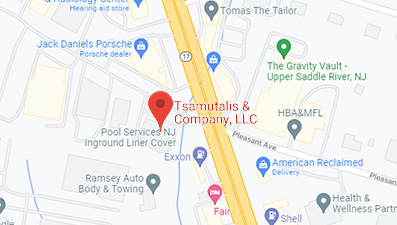
Part of the Coronavirus Aid, Relief, and Economic Security (CARES) Act was the $669 billion Paycheck Protection Program (PPP). As the year comes to a close, businesses are looking to apply for loan forgiveness where applicable and repay unused or unneeded funds.
The original Revised Full Forgiveness Application was quite complicated and covered several aspects that wouldn’t apply to smaller businesses and self-employed individuals.
Recognizing the heavy burden this would place on some PPP loan applicants; the Small Business Administration released the EZ Forgiveness Application. This application is only two pages and allows qualifying businesses to simplify their loan forgiveness application.
What Businesses Qualify for the EZ Forgiveness Application?
To be eligible for the EZ Forgiveness Application, businesses must have received a loan of $50,000 or less. The business also must qualify for one of the three following criteria.
- You are self-employed and do not employ anyone else in your business.
- Your business did not reduce employee salaries and wages by more than 25 percent. It did not reduce scheduled hours worked for your employees (this is compared to January 1, 2020, through March 31, 2020).
- Or, your business experienced a reduction in business due to health directives in your area related to COVID-19. Still, it did not reduce your employees’ salaries or wages by 25 percent or more during the loan period.
The PPP loans’ goal was to help reduce unemployment and financial hardships on individuals small businesses employed. That’s why the SBA places such a heavy emphasis on retaining employees and their original salaries or wages.
Information Needed to Complete the EZ Forgiveness Application
The more straightforward forgiveness form requires fewer calculations and documentation from the small business owner. Before starting the form, you should know important information about the covered period for your PPP loan.
Because of how long financial hardships have lasted for small businesses, the SBA extended the covered period from eight weeks to 24 weeks. This means that your covered period can be one of two durations.
- Twenty-four weeks beginning on the day you received your loan disbursement.
- If you received your PPP loan disbursement before June 5, 2020, you could use an eight-week covered period for your calculations.
The covered period for PPP loans will not extend beyond December 31, 2020, no matter the circumstances.
Now that you understand the covered period let’s get into the information you’ll need to complete the EZ Forgiveness Application.
- Business information includes name, DBA, address, TIN (or EIN, SSN), primary contact information (including phone number and email address)
- Loan number
- Lender loan number
- Loan amount
- Loan disbursement date
- Number of employees at the time of loan application
- Number of employees at the time of forgiveness application
- EIDL advance amount and application number (if applicable)
- Payroll schedule (weekly, biweekly, twice a month, monthly, other)
- Covered period dates
- Alternative payroll covered period
- Calculation of payroll and nonpayroll expenses that are eligible for loan forgiveness
The form will walk you through calculating your payroll and nonpayroll expenses that are eligible for loan forgiveness. However, it’s a good idea to work with a business tax advisor to complete this section of the form. This way, you ensure your calculation is accurate and that you’ve maximized your loan forgiveness amount.
Sixty percent of your loan forgiveness amount must be from payroll costs. The other forty percent can come from nonpayroll expenses. For the calculation, you should be prepared with the following financial information.
- Payroll costs, including compensation, employee benefits, and owner compensation.
- Business mortgage interest payments.
- Business rent or lease payments (real or personal property)
- Business utility payments (electricity, gas, water, telephone, transportation, or internet access)
Documentation and Certification Required for the EZ Forgiveness Application
Although the form itself is much simpler than the full forgiveness application, you’ll still need to attach documentation and certifications to your EZ Forgiveness Application. The second page of the application lists this required documentation. Discuss these documents with your business tax advisor.
There are a variety of ways you can document your expenses. These include the following.
- Bank statements
- Tax forms
- Payroll tax filings
- State quarterly business and employee wage reports as well as unemployment insurance tax filings
- Receipts, canceled checks, or account statements showing employer contributions
- Copy of lender amortization schedule to prove business mortgage interest payments
- Lease agreement to document rent or lease payments
- Utility bill copies for the covered period or receipts of payment for utility bills
You also need to create a folder with documentation that your salaries and wages were not reduced during the covered period. While you don’t need to submit this documentation as part of your loan forgiveness application, you must keep it for six years.
Business Tax Advisor Assistance with EZ Forgiveness Application
Even businesses that qualify for the EZ Forgiveness Application need to be careful to document all necessary expenses and information accurately to ensure loan forgiveness. Your application could be denied if the form is filled out incorrectly or lacks the required supporting documents and certifications.
Tsamutalis & Company is a team of certified public accountants and consultants who understand PPP loans in-depth and can provide support in applying for loan forgiveness whether you qualify for the EZ Forgiveness Application or complete the Full Forgiveness Application with the SBA.
Contact us to get started to ensure you maximize your PPP loan forgiveness.




Leave a Reply